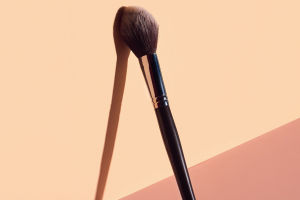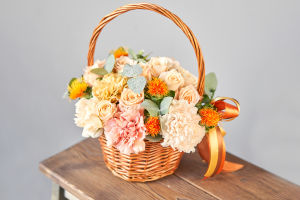Beauty of Flower Arrangement
Flower arrangement is more than just placing blooms in a vase; it’s an art form that transforms natural beauty into an expression of creativity.
From the selection of flowers to the choice of vase and the backdrop, every element plays a crucial role in creating a harmonious and visually appealing display.
Ready to elevate your floral game? Let’s dive into the world of flower arrangement and discover how to create breathtaking displays that leave a lasting impression
The Power of Flowers: Choosing the Right Blooms
Flowers are the heart of any arrangement, and choosing the right ones is essential to setting the tone and mood of your display. Bold, vibrant blooms like roses, sunflowers, or dahlias can create a striking centerpiece, while delicate flowers like lilies, tulips, or baby's breath offer a softer, more elegant touch.
The symbolism of flowers also plays a role; for example, red roses convey love and passion, while white lilies represent purity and peace. Mixing different types of flowers can add depth and interest to your arrangement, creating a dynamic composition that captures the eye. Did you know that in ancient Egypt, flowers like the lotus and papyrus were not just decorative but also had spiritual significance, often used in rituals and offerings? This historical connection adds a layer of depth to your modern-day arrangements, linking your creative process to traditions that span millennia.
The Vase: The Foundation of Your Arrangement
The vase is more than just a container for flowers; it’s the foundation that supports and enhances the overall design. The shape, size, and material of the vase can dramatically influence the appearance of your arrangement. A tall, slender vase is perfect for long-stemmed flowers like gladiolus or delphiniums, while a wide, shallow vase suits shorter blooms like hydrangeas or peonies. Glass vases offer transparency and lightness, allowing the stems and water to become part of the design, while ceramic or metal vases provide a solid, grounded base that can contrast beautifully with delicate flowers. The color of the vase should complement the flowers without overshadowing them. Neutral tones like white, black, or clear glass are versatile and timeless, while a boldly colored vase can make a statement, especially with a more monochromatic flower selection. Fun fact: The oldest known vase, dating back to ancient Mesopotamia, was crafted from clay and featured intricate carvings, showing that even thousands of years ago, the vase was considered an important part of the overall aesthetic.
The Background: Setting the Scene
The background against which your flower arrangement is displayed is often an overlooked element, but it plays a crucial role in the overall aesthetic. A well-chosen background can enhance the colors and textures of the flowers, making the arrangement pop. For a classic, elegant look, a neutral background like white or soft gray works wonders, allowing the flowers to be the star of the show. A dark, dramatic backdrop can create a striking contrast, making bright or light-colored flowers stand out even more. Consider the setting of your arrangement as well; a rustic wooden table can add warmth and character, while a sleek, modern surface can give a contemporary edge to your display. Don’t be afraid to experiment with different textures and patterns in the background, as long as they don’t compete with the flowers for attention. Here’s something interesting: In Japanese flower arranging, or ikebana, the background is often as important as the flowers themselves, with practitioners considering the negative space around the arrangement as part of the design, creating a sense of balance and harmony.
Creating Harmony: The Art of Balance and Proportion
In flower arrangement, balance and proportion are key to achieving harmony. The flowers, vase, and background should work together as a cohesive unit, with each element complementing the others. Consider the size of the flowers in relation to the vase—large, full blooms may require a sturdier vase, while delicate flowers can be overwhelmed by a heavy container. The height of the arrangement should also be in proportion to the vase, generally one and a half to two times the height of the vase itself. When it comes to balance, symmetry is not always necessary; asymmetrical arrangements can be just as beautiful, with a more dynamic and organic feel. The key is to ensure that the visual weight of the arrangement is evenly distributed, so the eye naturally flows across the display without feeling drawn to one side. An interesting approach to balance can be found in the Fibonacci sequence, a mathematical pattern often seen in nature. By arranging flowers in proportions that follow this sequence, you can create a display that is naturally pleasing to the eye, mirroring the beauty found in everything from seashells to sunflowers.
The Art of Flower Arrangement: A Creative Expression
Flower arrangement is an art form that allows for endless creativity and personal expression. Whether you prefer the structured elegance of traditional ikebana or the free-flowing style of modern arrangements, the combination of flowers, vases, and backgrounds offers infinite possibilities. By understanding the principles of color, texture, balance, and proportion, you can create stunning displays that not only beautify your space but also tell a story. Each arrangement becomes a unique work of art, reflecting the beauty of nature and the creativity of the arranger.
The art of flower arrangement is a celebration of nature's beauty and the human desire to create and design. By thoughtfully selecting flowers, choosing the right vase, and considering the background, you can transform a simple bouquet into a masterpiece. Whether you’re arranging flowers for a special occasion or simply to brighten your home, the interplay of these elements can bring your vision to life. So, embrace the beauty of flower arrangement, experiment with historical techniques, mathematical principles, and let your creativity bloom as you create stunning, meaningful displays.
Flower Arranging 101: Tips And Tricks For Beautiful Bouquets
Video By Today


